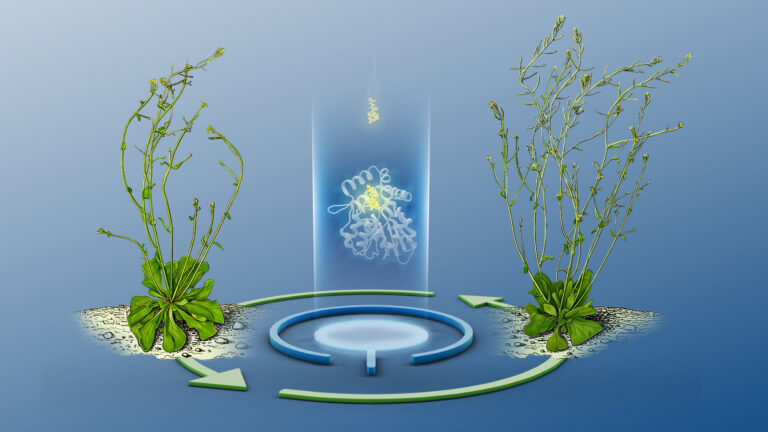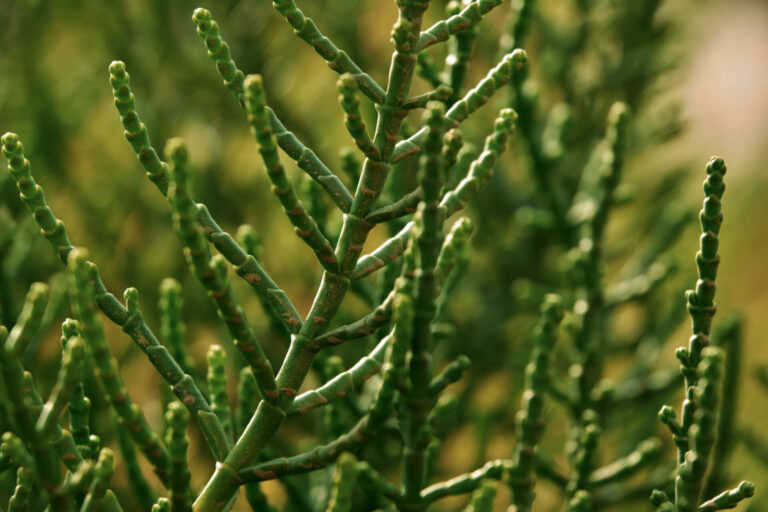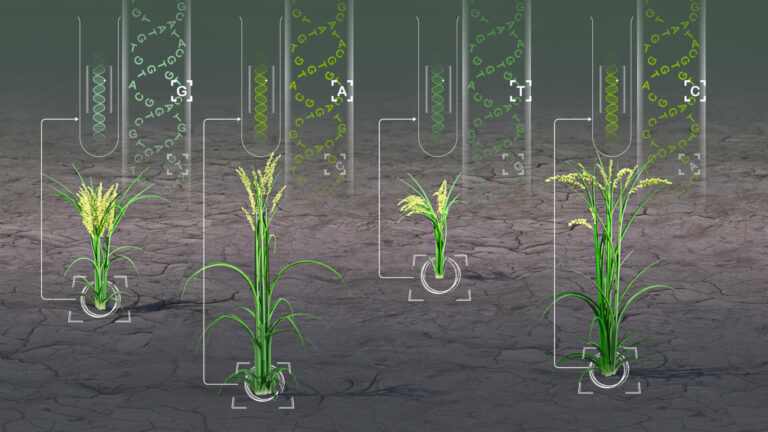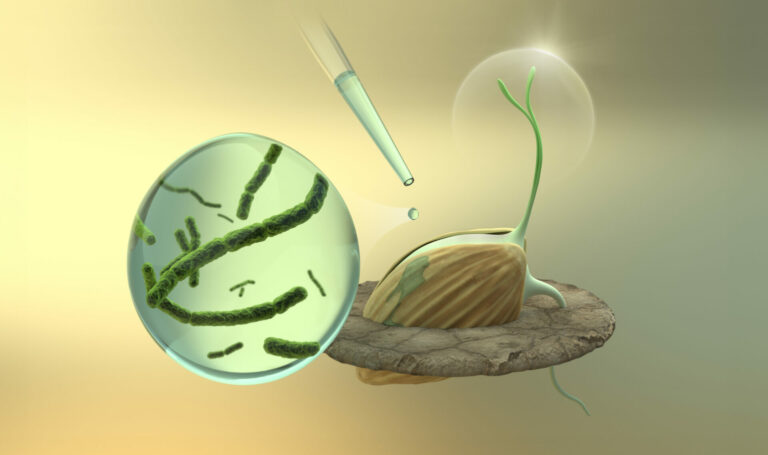Plant Science
A combat strategy for purple witchweed
Plant scientist Salim Al-Babili and his team are working across many fronts to save sub-Saharan African cereal crops from a menacing weed.

Plant scientist Salim Al-Babili and his team are working across many fronts to save sub-Saharan African cereal crops from a menacing weed.
Twenty years ago, Salim Al-Babili was working with an international team to genetically engineer golden rice: a variety of rice that synthesizes the vitamin A precursor, beta-carotene, and that can help combat potentially lethal vitamin A deficiency. Since arriving at KAUST in 2013, Al-Babili has turned his molecular genetics expertise to save staple cereal crops in sub-Saharan Africa from the parasitic clutches of witchweed.
Purple witchweed, scientifically known as Striga hermonthica, is an invasive parasitic plant that undermines cereal crops in sub-Saharan Africa, with annual losses exceeding US$7 billion. The weeds endanger the livelihoods and food supplies of an estimated 300 million people.

The yield of field crops is considerably decreased, as shown by this photo of rice with (left) and without Striga infestation.
© 2019 KAUST
A single germinating Striga plant leaves up to 200,000 seeds in the soil that can remain viable for up to 15 years. Growing host cereal crops, like pearl millet, release plant hormones into the soil called strigolactones. Striga seeds sense this hormone, which then triggers them to germinate. Striga weeds survive by siphoning off water and nutrients from the host crop for their own growth.
Al-Babili has been investigating the molecular pathways involved in this process and his findings were promising enough to attract a grant from the Bill & Melinda Gates Foundation. These funds are nourishing his research efforts with the ultimate aim to develop products to control Striga infestations.

© 2019 KAUST
Al-Babili and his team are taking a multipronged approach to prevent Striga infestations.
“If you want to combat Striga, you have to deal with the seed problem,” he says. Al-Babili and his team have developed synthetic strigolactone analogs1 that can be sprayed on seed-infested fields. As long as their host crop is absent, Striga seeds will sense the strigolactones, germinate and then die. So far, they have managed to reduce Striga growth in a field trial in Burkina Faso by up to 65 percent. “We are now working on improving the efficiency of this ‘suicidal germination’2 by developing more efficient strigolactone analogs,” says Al-Babili, and by exploring the addition of other compounds to their “germination stimulant cocktail” to increase the germination rate. “The idea is to reduce the time and number of treatments needed to clean the soil,” he says.

Salim Al-Babili and his team at their field site in Burkina Faso.
© 2019 KAUST
Al-Babili and his colleagues have also stumbled upon a compound that can inhibit Striga seed germination3. They were studying the molecular structure of a strigolactone cellular receptor in Striga seeds that controls their germination. To prepare their samples, the team used a common laboratory detergent called Triton X-100 and were surprised to find that this compound tightly binds to the seed’s receptor, preventing strigolactone access to it and inhibiting the seeds from sprouting. The team is now taking advantage of Triton X-100’s structure to develop a strategy that could support the manufacture of Striga-specific herbicides.
Studying a group of plant enzymes, called carotenoid cleavage dioxygenases, led to another discovery by Al-Babili’s team. A compound, zaxinone, synthesized by an enzyme from this family, not only promotes cereal crop growth, but it also suppresses the synthesis and release of strigolactones, reducing Striga infestation. This gives the plant what Al-Babili and his team call pre-attachment resistance. They are now working to develop zaxinone analogs that can be applied to fields throughout the planting season, complementing Striga’s suicidal germination approach.
Developing genetically resistant pearl millet crops is another tactic being used by the team. They are identifying genetic factors underlying Striga resistance through comparisons between a cultivated, susceptible and a wild, resistant line of pearl millet. Currently, they are identifying the different types of strigolactones released by these two lines and are investigating their contribution to Striga infestation. “This is difficult analytical chemistry work,” says Al-Babili.
The project is ambitious, involving collaborations with experts in structural biology, chemistry, bioinformatics, agronomy and weed science, genetics, and pearl millet breeding from KAUST, Japan, the Netherlands, Burkina Faso and Niger.

(l-r) Salim Al-Babili and team members Boubacar Kountche and Muhammad Jamil discuss the impact of a Striga infestation on pearl millet plants in the KAUST Core Labs Greenhouse.
© 2019 KAUST
This work builds on Al-Babili’s earlier work in food security. “I believe that science needs to solve societal problems,” says Al-Babili. “It’s not enough to say that your findings in fundamental science could have a certain application. You should explore this possibility. Once you decide to do the work, you need energy and patience to translate your findings, and you need to give up other things. If it works, it is quite satisfying.”
If Al-Babili’s strategies work, they could greatly enhance pearl millet resistance to Striga infestation, which would have substantial impacts on food security and on the incomes of small-hold farmers in sub-Saharan Africa.
References
-
Jamil, M., Kountche, B.A., Haider, I., Guo, X., Ntui, V.O., Jia, K.P., Ali, S., Hameed, U.S….Al-Babili, S. Methyl phenlactonoates are efficient strigolactone analogs with simple structure. Journal of Experimental Biology 69, 2319–2331 (2018).| article
- Kountche, B.A., Jamil, M., Yonli, D., Nikiema, M.P., Blanco‐Ania, D., Asami, T., Zwanenburg, B. & Al‐Babili, S. Suicidal germination as a control strategy for Striga hermonthica (Benth.) in smallholder farms of sub-Saharan Africa. Plants, People, Planet 1, 107-118 (2019).| article
- Hameed, U.S., Haider, I., Jamil, M., Kountche, B.A., Guo, X., Zarban, R.A., Kim, D., Al‐Babili, S. & Arold, S.T., Structural basis for specific inhibition of the highly sensitive ShHTL7 receptor. EMBO Reports 19, e45619 (2018).| article
- Wang, J.Y., Haider, I., Jamil, M., Fiorilli, V., Saito, Y., Mi, J., Baz, L., Kountche, B.A., Jia, K.P., Guo, X. & Balakrishna, A. The apocarotenoid metabolite zaxinone regulates growth and strigolactone biosynthesis in rice. Nature Communications 10, 810 (2019).| article
You might also like

Bioscience
Hidden flexibility in plant communication revealed

Plant Science
Reference genomes for rice’s wild relatives may boost future crops

Bioscience
Digging into the world of plant-growth-promoting microbes

Environmental Science and Engineering
Hydrogen storage solution could lie in lakes

Bioscience
Unraveling modern bread wheat from the genes up

Bioscience
Why do some plants thrive in saline conditions?

Bioengineering
Analytic tool reveals more cream of the crops

Plant Science




